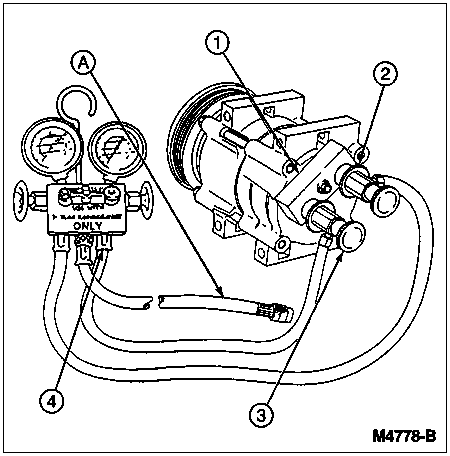Leak test, evacuate and charge the system. Observe all safety precautions.
Connecting Gauge Set to Check for Leaks

| Item | Part Number | Description |
|---|---|---|
| 1 | T94P-19623-E | Pressure Test Plate (R134a) |
| 2 | 176-R0036 | R-134a Low-Side Quick Disconnect |
| 3 | 176-R0037 | R-134a High-Side Quick Disconnect |
| 4 | 176-R032A | Manifold Gauge Set (R134a) |
| A | — | To Refrigerant Supply Tank (Part of 176-R032A) |